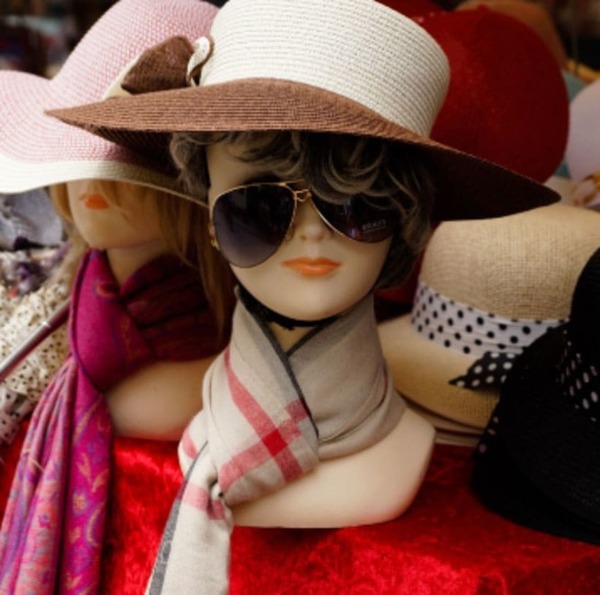Amazon Launches Shazam Like Features for Clothing
As
Amazon seeks a lead role in fashion with StyleSnap, a new tool for discovering fashion items, the parallels to
Shazam have gained attention.
Shazam may not have become a household name like Amazon, but retail commentators are now discussing how Amazon copied Shazam. One such report, from
BusinessInsider, calls Amazon’s StyleSnap the “Shazam for fashion” tool.
The truth is, tech is such a fast-moving and innovative industry that it’s hard to say who is copying who. Technology leaders like Amazon will likely assimilate much of the best thinking in the industry regardless of who originated it. Smaller competitors will also learn from Amazon.
For consumers, the benefits could be immense. Amazon’s latest moves might indicate a broader move to visual search technology.
Another Win for AI
If Amazon’s latest technology pans out for the long haul, discovering and shopping for clothes to wear will become mediated by tech. Rather than find out from friends or experts what to wear, computer algorithms could have a more important say.
Just like with Shazam, artificial intelligence,
also known as AI, underpins the whole functionality of Amazon’s StyleSnap.
Forbes defines artificial intelligence as “systems that think exactly like humans do.” This is what Amazon has achieved by letting a computer find style matches for you instead of relying on friends who know fashion better than you.
As TechCrunch explains, StyleSnap uses AI techniques to detect the clothing styles in a user-uploaded fashion photo. The tool then uses deep learning, an advanced form of computer intelligence, to make selections from Amazon’s catalog that match the uploaded photos.
Convenience and Ease When Shopping a “Look”
While Shazam created waves when it launched a music AI for identifying songs, StyleSnap offers similar conveniences to the fashion market.
This will simplify shopping for clothing since buyers don’t need to be experts at recognizing styles or brands. All you need now is the ability to upload images of clothing into StyleSnap, and the app will show you items that match that look.
ASOS and Others Using the Concept
Fashion retailer
ASOS, for example, offers a service with features similar to Amazon’s StyleSnap.
ASOS Style Match
The British fashion retailer ASOS launched Style Match in 2018. Integrated in its iOS and Android mobile apps, Style Match recommends items for ASOS shoppers based on uploaded images.
There are multiple ways to upload images into Style Match. Users can upload images from Instagram, take images using Style Match, or use photos taken from magazines.
Other Competitors: Google Lens, Screenshop
The style identification technology in Amazon’s StyleSnap is an idea others besides ASOS have recently discovered. Big retailers and even tech companies like Google are rushing to adopt the capabilities of AI in object recognition, making it available to everyday shoppers.
Google
announced in May 2018 that it would integrate similar AI in its Google Lens project. Google Lens is a broader AI project that seeks to answer people’s questions about the objects around them.
The technology is available in Google Assistant and supported Android phones. Now, Google Assistant users can take photos of fashion items and get details about the clothes as well as where to buy them.
Another notable competitor to StyleSnap is
Screenshop, a fashion shopping app with backing from Kim Kardashian West. Screenshop is an important case study for what Amazon is trying to do due to its ability to drive real clothing purchases.
According to WWD, a few months after its launch, the app had already processed over 17 million screenshots and driven hundreds of thousands in apparel sales.
Why Visual Search Will Become Vital for Retailers
The trend of fashion-focused apps and tech giants releasing fashion discovery tools based on image search underscores the growth of visual search.
This is an area of technology whose benefits for the fashion industry appear obvious, but it’s a new field that’s still in infancy. Amazon’s embrace of the technology could be important in setting the company ahead of other retailers.
Millennials, Generation Z Early Adopters of Visual Search
As reported by BusinessWire, visual search is the emerging technology that Millennials are most excited about. This is based on data gathered by ViSense, an artificial intelligence service provider.
ViSense surveyed a sample group of 1,000 Millennials and Generation Z consumers to better understand these generations’ attitudes to technology. The company’s surveys revealed that these generations had a majority, 60%, who were most likely to complete transactions on their mobile devices.
Perhaps due to their over-reliance on their mobile devices, 62% of these respondents also expressed a strong preference for visual search to quickly find products on mobile devices.
The Challenge for StyleSnap
As reported by
Quartz, Amazon has been traditionally weak at selling design-driven fashion. StyleSnap, which offers features that leading fashion brands might not have on their own shopping channels, could help change things.
By staking a position in the growing market for visual search, Amazon might be able to improve its position in the fashion industry.
Plenty of challenges remain, however. StyleSnap on its own might not be enough. As described above, there are established competitors like ASOS with similar capabilities.
New upstarts like Screenshop pose more competition for Amazon’s intended role in the fashion industry. In all probability, Amazon will need to innovate further around the fashion industry if it wants to distinguish itself from competitors.
StyleSnap Telegraphs the Future
Whether StyleSnap will be a true game changer for Amazon remains to be seen. By launching StyleSnap now, however, Amazon has indicated that AI-powered visual search is likely to be more important for fashion. The technology makes life easier for fashion shoppers looking to discover new items to wear. If this kind of visual search keeps up its growth, it could change the way we shop for not only fashion, but many other items that rely on our visual senses.
